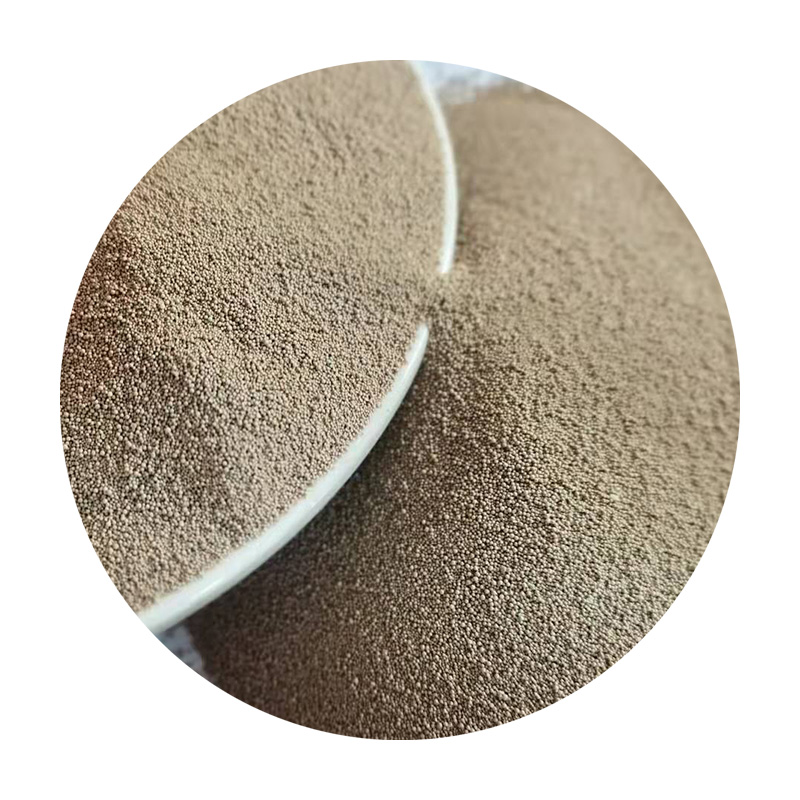What Type of Sand is Used for Sand Casting?
Sand casting is a widely used manufacturing process that dates back thousands of years. It involves pouring molten metal into a mold made from sand to create metal parts. The quality of the castings and their characteristics depend significantly on the type of sand used. Understanding the different types of sand utilized in sand casting, as well as their properties, can help in optimizing the casting process for various applications.
Types of Sand Used in Sand Casting
1. Silica Sand Silica sand is the most common type of sand used in sand casting. Its primary component is silicon dioxide (SiO2), which is known for its high melting point and thermal stability, making it ideal for withstanding the heat of molten metal. Silica sand is highly abrasive and is available in a variety of grain sizes. This versatility allows it to be tailored to different casting requirements. Usually, a finer grain size is preferred for detailed and intricate patterns, while coarser grains are used for less detailed work.
2. Green Sand Green sand is a mixture of silica sand, clay, water, and other additives. This is one of the most commonly used forms of sand in foundries due to its excellent molding characteristics. The term green refers to the fact that sand molds are not baked or heated before pouring the molten metal. The clay in the mixture acts as a binder, giving the sand its cohesiveness. Green sand is notable for its ability to retain moisture, which contributes to producing detailed surface finishes. It is particularly effective for casting iron and aluminum parts.
3. Dry Sand Unlike green sand, dry sand molds are baked to remove moisture before casting. This process helps to create a stronger mold that can withstand the heat and pressure of molten metal. Dry sand is often used in applications where high precision and surface finish are essential, such as in the production of high-quality steel castings. The use of dry sand leads to less gas generation during the casting process, minimizing defects in the final product.
4. Cold Box Sand Cold box sand is a type of chemically bonded sand that is used in the cold box molding process. This method involves mixing sand with a resin and a hardener, allowing the sand particles to bond together at room temperature. This type of sand provides excellent dimensional accuracy and surface finish while reducing the risk of mold distortion. Cold box sand is particularly advantageous for producing complex shapes and fine details and is often used for casting high-performance materials.
what type of sand is used for sand casting

5. Facing Sand Facing sand is a fine grade of sand spread over the surface of the mold cavity. Its purpose is to produce a smooth surface finish on the final casting and to match the details of the pattern. This type of sand can be derived from silica, but additives may be included to enhance its properties. Facing sand is critical in ensuring that the casting achieves the desired quality, especially in high-visibility areas.
Considerations for Choosing Sand
When selecting the type of sand for a specific casting application, foundries consider several factors. These include
- Melting Temperature The sand must withstand the temperature of the molten metal without breaking down. - Grain Size Finer grains result in smoother finishes, while coarser grains may be better suited for stronger molds with less detail. - Moisture Content The amount of moisture in the sand affects its binding capabilities and overall performance. - Reusability Many foundries prefer sands that can be recycled and reused to minimize costs.
Conclusion
In summary, the choice of sand for sand casting plays a crucial role in determining the quality and characteristics of the final casting. From silica sand to specialized sands like cold box and facing sand, each type has unique properties that cater to different types of metal casting processes. By understanding the characteristics and applications of these sands, foundries can optimize their production processes, reduce defects, and ensure high-quality cast metal products. The advantages offered by each sand type allow manufacturers to meet the increasingly diverse needs of industries, making sand casting a versatile and valuable method in modern manufacturing.
Post time:Dez . 28, 2024 20:18
Next:Incorporating Foundry Sand in Concrete Mixes for Sustainable Construction Practices
